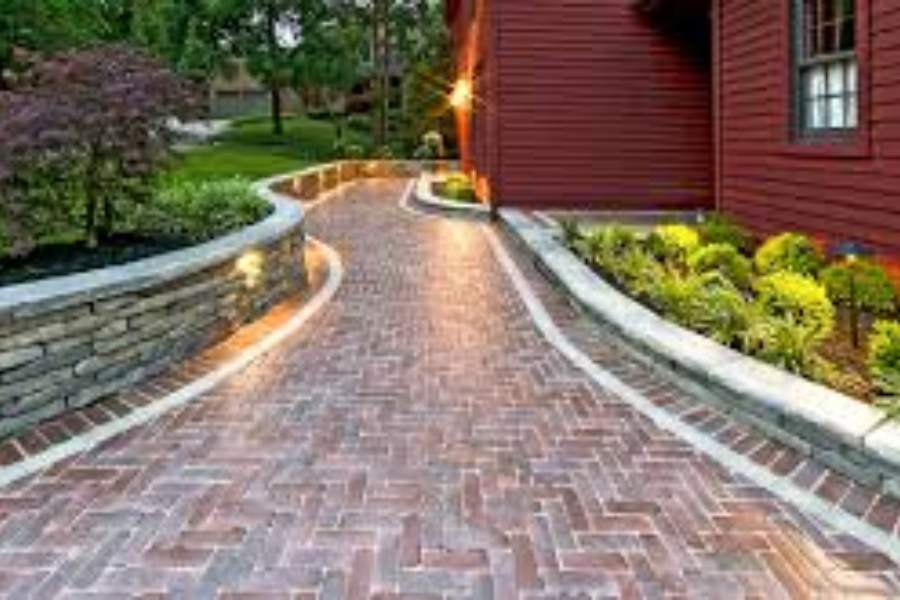If you’re looking to upgrade your outdoor area, stone pavers are an excellent choice. These versatile and durable materials can enhance the beauty and functionality of your garden, driveway, patio, or walkway.
This article will guide you through the benefits of stone pavers, the different types available, and how to install them, ensuring you make an informed decision for your next project.
Why Choose Stone Pavers?
Stone pavers are a popular choice for outdoor flooring due to their strength, durability, and aesthetic appeal. Here are some key reasons why stone pavers are a great investment for your property:
- Durability: Stone pavers are incredibly strong and can withstand heavy traffic and harsh weather conditions. Whether it’s a high-traffic driveway or a garden path, stone pavers are built to last.
- Aesthetic Appeal: With a variety of colors, textures, and sizes, stone pavers can complement any architectural style and landscape design. They provide a natural, timeless look that can enhance the curb appeal of your home.
- Low Maintenance: Unlike other materials that require regular upkeep, stone pavers are relatively easy to maintain. They resist stains and can be cleaned with simple methods.
- Flexibility: Stone pavers can be used for various applications, including patios, walkways, driveways, and garden paths. Their versatility makes them a popular choice for different outdoor settings.
Types of Stone Pavers
Stone pavers come in several types, each with its unique characteristics. Here are some popular options:
- Concrete Pavers: These are manufactured from a mixture of cement and aggregates, making them highly durable and customizable. They come in various shapes, sizes, and colors, allowing you to create a personalized design.
- Natural Stone Pavers: Made from natural stones such as granite, limestone, and sandstone, these pavers offer a unique and elegant look. They are available in different finishes, including polished, honed, and tumbled.
- Clay Pavers: These pavers are made from kiln-fired clay and are known for their rich, earthy colors. They have a classic appearance and are often used in traditional landscaping designs.
- Flagstone: Flagstone pavers are flat pieces of natural stone, typically used for creating a rustic look. They come in irregular shapes and sizes, which can add a unique touch to your outdoor space.
How to Choose the Right Stone Pavers
Selecting the right type of stone pavers involves considering various factors. Here’s a step-by-step guide to help you make the best choice:
- Determine Your Budget: Stone pavers come in a range of price points. Decide how much you’re willing to spend on materials and installation.
- Assess Your Needs: Consider the purpose of the pavers. For high-traffic areas, opt for more durable materials like concrete or natural stone. For decorative purposes, you might choose flagstone or clay pavers.
- Evaluate the Environment: Think about the climate and soil conditions in your area. Some pavers are better suited to certain weather conditions or ground types.
- Choose a Style: Match the style of pavers to your existing home and landscape design. Whether you prefer a modern look or a more traditional feel, there are pavers to suit every taste.
- Check for Maintenance Requirements: Some pavers require sealing or regular cleaning. Consider how much maintenance you’re willing to perform before making a final decision.
Installation Process for Stone Pavers
Installing stone pavers can be a DIY project or a job for professionals, depending on your skill level. Here’s a general guide to the installation process:
- Prepare the Area: Start by marking out the area where you plan to lay the pavers. Remove any existing grass, plants, or debris. Ensure the area is level and well-drained.
- Create a Base: Lay down a base layer of crushed stone or gravel. This helps with drainage and provides a stable foundation for the pavers. Compact the base material to ensure it’s even.
- Add a Sand Layer: Spread a layer of sand over the base material. This will help to level the pavers and provide a cushion. Use a rake to smooth the sand and a compactor to set it in place.
- Lay the Pavers: Begin laying the pavers from one corner, working your way across the area. Leave a small gap between each paver for joint sand. Make sure to use a rubber mallet to tap the pavers into place and ensure they’re level.
- Fill the Joints: Once all pavers are in place, spread joint sand over the surface and sweep it into the gaps. This helps to lock the pavers together and prevent shifting.
- Compact the Surface: Use a compactor to press the pavers and joint sand into place. This will help to ensure the pavers are firmly set and the surface is level.
- Clean Up: Finally, sweep away any excess sand and clean the surface of the pavers. Your new stone paver area is now ready to enjoy!
Conclusion
Stone pavers are an excellent choice for enhancing your outdoor spaces. Their durability, aesthetic appeal, and low maintenance make them a practical and stylish option for patios, driveways, walkways, and more. By understanding the different types of stone pavers and following the installation steps, you can transform your outdoor area into a beautiful and functional space.
Keep an eye for more news & updates on Gossips!




